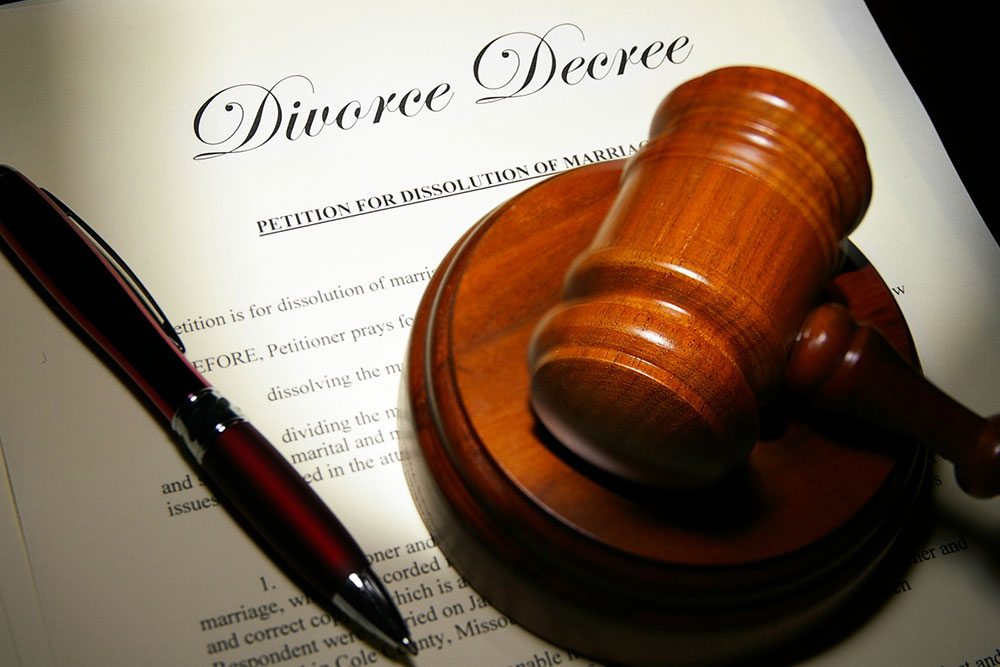6 mistakes to avoid in a DIY divorce

Divorces can be expensive. So, the idea of saving money by tackling the whole divorce process by oneself, or a DIY divorce, as some call it, can seem appealing. But navigating a divorce, even an amicable one, involves a complex web of legal jargon, state-specific laws, and financial considerations. Understanding the major mistakes to avoid in a DIY divorce can help one decide if this route is truly the path of least resistance for one’s situation.
Mistakes to avoid
Here are a few mistakes to avoid in a DIY divorce:
1. Not consulting a legal advisor
Let’s face it: most individuals know very little about the legal world and its nitty-gritty. They are not legal experts. Divorce laws vary from state to state, and understanding things like child support guidelines, property division regulations, and spousal maintenance statutes can be overwhelming, to say the least. Misinterpreting these laws during divorce can lead to lopsided settlements that leave one feeling shortchanged or, worse, stuck in a legal battle that could have been avoided.
So consider this: even if one decides to go the DIY route, consult with an attorney for a limited consultation. Think of it like a financial advisor one sees before making a big investment. This can help one understand the specific legal landscape of divorce and identify areas where one might need professional guidance, saving time, money, and a whole lot of frustration in the long run.
2. Being presumptuous about the settlement
Many people might have certain expectations regarding their divorce settlement and what they are entitled to receive. For example, they might expect to keep the house or car. That said, issues like alimony, child support, and asset division are determined based on specific factors outlined in state law, and the outcome may not necessarily align with what one initially expected.
Consider this: Thorough research and prudentness about unexpected outcomes can help one deal with the situation better. One should look into the state’s divorce statutes online or consider contacting legal aid services for guidance. Understanding one’s potential entitlements can help one approach negotiations with their ex-partner (or their lawyer) from a more informed position.
3. Failing to factor in future expenses
While divorce involves dividing assets and splitting the bank account, it is also about establishing a new financial reality for oneself and the children. DIY divorces often overlook the hidden costs of maintaining two separate households, like increased utility bills, additional childcare expenses, and adjustments to health insurance needs. Think of it like this: One may create a budget for a new life as a single person, but then a few unaccounted-for things start surfacing. Maybe one forgot to factor in the extra cost of groceries or the increased electricity bill because they no longer have to split expenses with their partners. In such a case, one may struggle to make ends meet, adding financial stress to a difficult situation.
Consider this: Take some time to create a comprehensive budget that factors in all the potential expenses associated with the new living situation. Take slightly bigger numbers than the estimations. This will help one have some wiggle room for rainy days.
4. Not formalizing everything
Informal arrangements regarding child custody, visitation schedules, or financial support can easily lead to misunderstandings and future disputes.
Consider this: Formalize all agreements in writing. This means creating a concise document outlining child custody arrangements, visitation schedules, and financial responsibilities. Having these agreements reviewed by an attorney can ensure they are legally binding and protect one’s future interests.
5. Navigating everything alone
While DIY divorce might seem like a way to save money on legal fees, it can also mean going through it alone during a highly emotional time. The stress of navigating legalese, court appearances, and potentially hostile communication with one’s ex-partner can easily cloud one’s judgment. This emotional strain can make it difficult to advocate for oneself effectively and could lead to a less favorable outcome in the long run.
Consider this: even if one decides to pursue a DIY divorce, consider seeking support from a therapist or counselor. A neutral third party can help one process one’s emotions, develop healthy coping mechanisms, and approach the legal aspects of the divorce with a clearer head.
6. Ignoring the benefits of mediation
Mediation is a collaborative process where a neutral third party, a mediator, facilitates communication between one and one’s ex-spouse. The mediator’s role is to guide both toward a mutually agreeable settlement on issues like child custody, property division, and financial support.
While mediation can be successful with or without an attorney present, it can be particularly beneficial in DIY divorces where communication might be strained or emotions run high. A skilled mediator can help keep the conversation focused, ensure both parties are heard, and ultimately reach a compromise that works for everyone involved.
Consider this: explore mediation services, even when pursuing a DIY divorce. Mediation can save time and money in court fees and lead to a more amicable and respectful resolution.